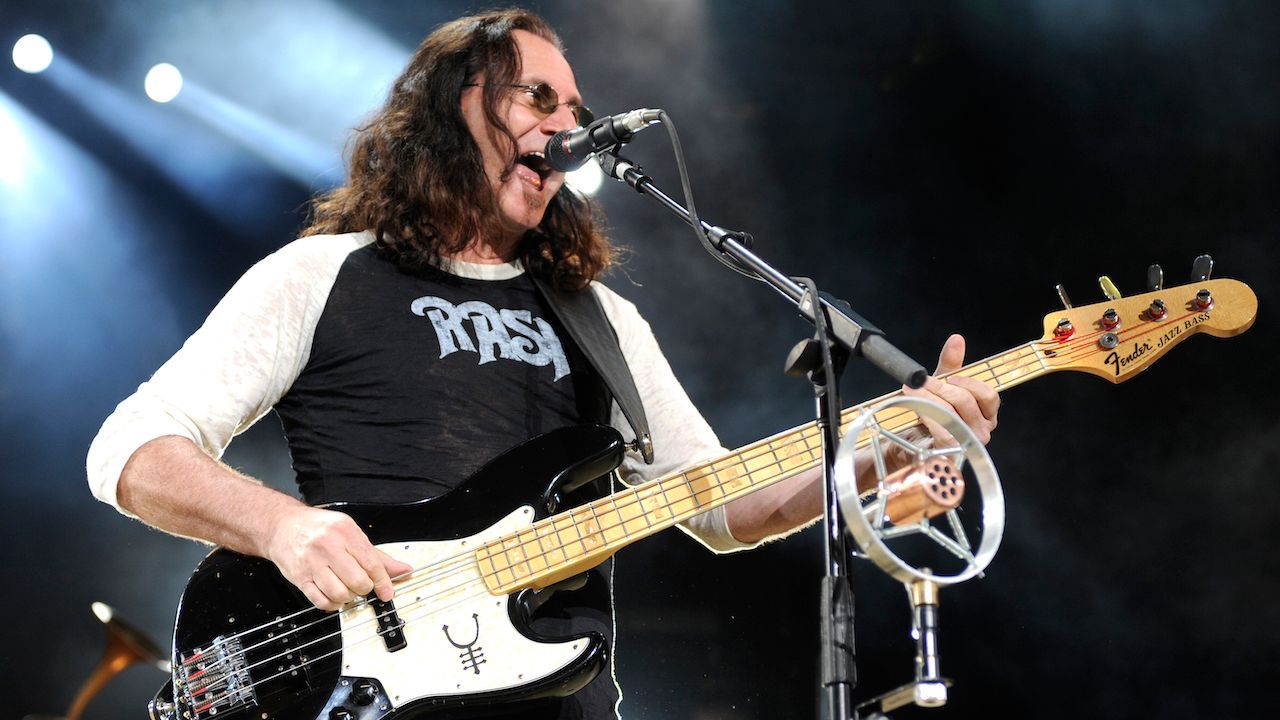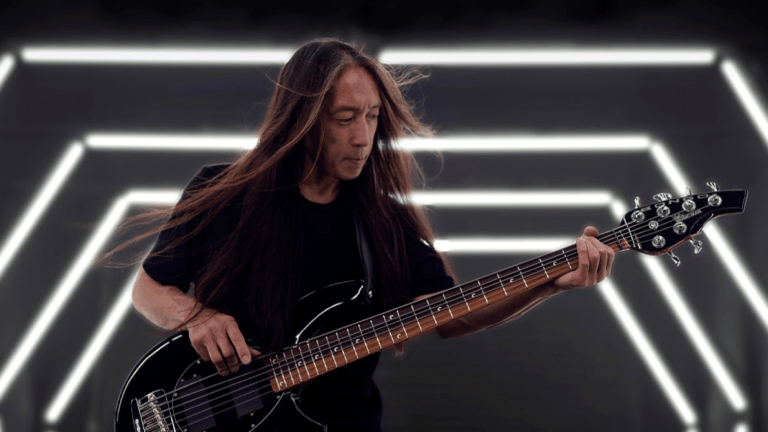NEWS
TOP 5 BASS PLAYERS BY ALEJANDRO FONG
Photo by HeavyRock Photography
There have been a lot of influential people that have changed the way I approach both my instrument, and music in general. However, when it comes to writing a bass line and/or using different techniques in order to get a particular sound, there are a few bass players that come to mind frequently. The following is a list of my top 5 bass players, I hope you enjoy it!

5. Geddy Lee
I had the luck of attending a music school as soon as I got my first bass (a used
Yamaha Erb300ii). I was receiving 1 hour of lessons per week. This is where and how I met musicians, and how I got exposed to even more
progressive rock. After around 2 years, I had to learn
YYZ
for one of the school shows, a track with some right-hand patterns that might put your technique to the test. This is how I recall finding out about
Rush.
Detecting the bass in a Metal song is often difficult. There may be many layers of low tuned guitars, a really pronounced bass drum, and, on top of that, the presence of the bass depends on many things (like the tone of the bass and the mix engineer). Although Rush is not Metal, I did get surprised by Geddy’s tone and how present it was on the mix. It is indeed one of the first examples that comes to mind when I think of the sound of a
Fender jazz bass.
To describe it in more depth, Geddy’s tone has a certain snap that, from my perspective, is coming from his right hand, an overdrive, and the jazz bass tone itself. This got me into looking for a more aggressive tone for the music I was playing (it is not enough just to play the right notes, you must also provide a sound that adds to the overall message of the song while doing so and, from my perspective, distortion alone doesn’t get me there). It also gave me an approach on how to serve as a complement to the guitar without necessarily staying on the lower octave and adding those gallops in the bass line when switching strings, which I didn’t see as often when I was learning.
Finally, another aspect that might be worth taking into account is how Geddy’s technique looks. You can see him plucking with only one finger, his thumb coming from behind the neck, and that he is not using the “one finger per fret” approach on the fretting hand. Nevertheless, he is still able to communicate with his music and reach a tone that a lot of players are looking for. This aspect makes me think about how music derives from how we use our body and the instrument to express something. There might be more energy efficient, better looking and “cleaner” sounding ways to play something, but it is never as important as connecting with people.
Some of the songs that got me into Rush were:

4. Cliff Burton
During my first years of playing bass I was listening to a lot of
Nu metal (Limp Bizkit,
Korn,
Linkin Park,
SOAD, etc). It was through an
MTV
icon that I discovered
Metallica.
Limp Bizkit did an incredible cover of
Sanitarium (Welcome Home) and I had the itch to go listen to the original track. This is how I discovered Cliff.
He might have been the first bass player I watched soloing on bass, and the first one I recall seeing using distortion. At the time I might have been 14 years old, I remember one of my cousins left both his squier stratocaster guitar and his amp at my house (which was a 15 watt CRATE with overdrive) and I went straight to the amp and plugged in my bass to try it out.
After I discovered Cliff I started trying to get that guitar-like tone and was really curious on how someone could shape the tone of the instrument that way. It was not so long ago that I revisited this and found out that he was using really light RotoSound strings (making bending easier) along with a guitar single-coil pickup on his Rickenbacker bridge at some point (giving him some extra high frequencies). This is put together with a Morley Power Wah Fuzz and a Big Muff.
So, putting aside his aggressive right-hand approach, the way he provided a foundation without strictly doubling the guitars, and his knowledge of music theory, I think what amazes me the most about Cliff is how he created this tone and how different it is to what I was used to hearing in the music I was learning from. I take it as a lesson to stretch the boundaries as far as possible when it comes to bass. Have no fear when experimenting and getting it closer to the sound in your head.
Some tracks to listen to are:

3. Victor Wooten
When I was around 16, my bass teacher at the time shared Victor Wooten’s
Amazing Grace Bass solo video with me. Apparently it was something I needed to watch, and boy was he right!
We could talk for hours about Victor Wooten because not only did he break the mold for bass playing, he also did it in such a way that resonates with many musicians and people in general. It is one thing to explore his bass solos, chord melody arrangements, the use of MIDI on his fretboard, his double thumb slap approach and the freedom he technically and musically has on the bass, and another thing to actually listen to him play “regular” bass on a song, maintaining the groove like a boss.
As if his bass playing weren’t enough, his approach on communicating his ideas has kept me hungry for knowledge and inspired me to do so. For some of the musicians I’ve gotten the chance to discover, putting names to some concepts is not that important. But for me it allows me to build a base of concepts on which I can add more complex ideas (not taking this idea to the extreme).
It is through his music that I found out about his teachings and it is through his live performances (sadly I’ve seen him only twice) that I get reminded that some of the obstacles that may be present could be just a challenge for our creativity.
A few tracks you might like, if you are just learning about the amazing Victor Wooten, are:

- Billy Sheehan
While some of the music I have discovered required some attempts to digest, this was not the case with Billy Sheehan. I remember I did the classic internet search for bass solos and found one of his. I don’t recall the year the video was from, but he was going so fast on the neck that it just blew my mind (it was probably this one).
That being said, I must clarify, the speed did amaze me, but listening to his bass lines for
Steve Vai,
Mr Big and, some years later,
The Winery Dogs made me give more thought to it. I think that the main factor was the freedom he has on the instrument. Billy can shred for sure, but the use of harmonics (natural and artificial), bending, vibrato, and other subtleties in the phrasing, make the language understandable for the listener.
His music definitely opened a new door on how to approach bass, at least in the place where I lived at the time. There was little to no use of distortion on bass and vibrato was a concept only guitar players knew about. Bass players would go straight to the amp without even adding a boost for a solo (because that’s not the main role of the instrument and the lack of soloing wouldn’t, in my opinion, allow you to explore the equipment and language needed for the sound you had in mind). Thankfully, Billy has many videos exploring his rig and you can expand your horizons through his stereo approach to distortion.
Some bass lines from Billy Sheehan remember frequently would be:

- John Myung
I recall discovering Dream Theater while I was browsing for more Metallica concerts. I found this Master of Puppets tribute they did back in the day and I asked my friends about them. One of my mates shared some of the band's music with me and, to be honest, I couldn’t understand it one bit. I actually fell asleep three times trying to watch Scenes From New York.
Anyway, I was really curious about why my musician peers, whom I respected, were so into it. So on my fourth watch-through of
Scenes from New York, I finally got hooked on the chorus from
Strange Déjà Vu and started figuring out how to play it.
Learning a Dream Theater song is not so simple. John Myung sticks firmly to doubling the guitar no matter how intricate the riff might be (take
Dark Eternal Night or
Caught in a Web as an example), whilst also being able to lay a groove over other sections (The first verse of
Learning to Live comes to mind).
It is hard to summarize since I have learned many of his arrangements (doing them justice is a totally different thing). However, I would say it is a great example of exploring the instrument (using tapping, chords, harmonics, chord tones, and blasting right hand speed) while keeping focus on the pocket or contrasting the melody when necessary (the unison section in
This Dying Soul might be a representation of this). It is something I try to keep in mind when writing a bass line.
If you are discovering Dream Theater or would like to get to know John Myung a bit better I would recommend:
These would be the top 5 bass players that have influenced me the most. When I listen to some of the recordings I’ve made, and try to back-track to where the ideas and sounds may have come from, I’m really glad I got the chance back in the day, and also now, to get exposed to music in general. So, hopefully this will shed light on how I perceive music and learning and, most of all, be helpful for somebody out there.
Peace!
21 - September - 2023
SHARE
